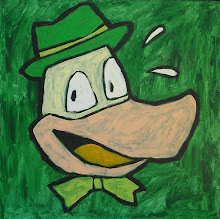
You've seen them. We've all seen them, or variations on the theme. Those very-official-looking, yet also very occult-looking, round-ish things with shieldlike wings. You know, this thing:

There are a surprisingly high number of them on graves in Kentucky cemeteries, including Louisville's Cave Hill:





There are many interpretations and uses of this symbol, and its many variants, by several different groups. The symbol, very loosely and generally called The Winged Dragon, The Winged Sun, The Winged Disc, etc. The book The Rosicruicians and their Teachings by Swinburne Clymer says:
The Winged Globe is pre-eminently a Rosicrucian symbol, although the Illuminati may lay claim to it, and it may be admitted that it is of Egyptian origin. The Winged Globe is the symbol of the perfected soul making its flight back to the source of its creation in the Elysian fields beyond.
This interpretation of the symbol is most likely why it turns up on tombstones as often as it does. But the ancient Egyptians traditionally depicted two serpents on the wings, representing the goddesses protecting Upper and Lower Egypt - it's a bit odd to maintain this practice in modern-day Kentucky. Unless there's more going on, symbolically speaking, than meets the eye.

Meanwhile, Albert Churchwald's 1913 book The Signs and Symbols of Primordial Man, describes it this way:
The Winged-Disk, with the Uraei of Egypt, the original of which we find in the text summarized by Naville in the "Myths of Horus," pII. xii. "Horus commanded Thoth that the Winged-Sun-Disk, with Uraei, should be brought into every sanctuary wherein he dwelt, and into every sanctuary of all the gods of the lands of the South and the North, and in Amentet, in order that they might drive away evil from therein...." This is what is meant by the Winged-Disks, with the Uraei, which are seen over the entrances of the courts of the temples of all the gods and goddesses of Egypt.
The early Egyptians called it Behedeti, and associated it with Horus and, some say, later Ra. A somewhat modified version, in a tribute to Horus, can been seen in this artifact from the Louvre:

Note the Shen Rings in Horus' falcon claws, and note the downward-pointing tail, features which appear on some variants of the Winged Sun but not on others. Note the tail does appear on this Zoroastrian depiction, which also includes a man's soul ensconced in the center, making his way Heavenward:

Then there's similarity to some depictions of mythical Firebird creatures, including Bennu, The Huma Bird, Fenghuang, Garuda, Simurgh, Zhar-Ptitsa (which Stravinsky's Firebird Suite was about), and of course, the Phoenix. The Phoenix myth is also symbolically appropriate for grave decoration, meaning as it does rebirth, rising from the ashes of Death - literally, not just figuratively. Some of these mythical creatures are distinctly dragon-like in many ways, and displaying oddly insectlike antennae.
Just last month, this crop circle with a Firebird motif caused more than the usual stir among the woo-woos of the world (myself included):

And here's a more classic example of the symbol in a 1999 crop circle:

I'm on the lookout for interesting variants of the Winged Sun/Disk/Dragon symbol on gravestones in Kentucky, so if the taphophiles lurking out there know of any, let me know. I'm also very interested in gravestones with the very similar motif of winged skulls, cherubs, and seraphim. Seraphim, incidentally, literally means "burning ones" in Hebrew (which brings us back to the Phoenix) - and also has an ancient slangy double-meaning connotation of flying reptiles (which brings us back to dragons).

Lastly, some of the aforementioned internet woo-woos have been saying that the symbol has been a warning all along about the eventual return of the double-tailed rogue planet Nibiru in 2012. It is true that the Babylonian God Nibiru was sometimes represented by the winged-disc insignia, but it also represents a celestial object (some say comet, some say planet, some say spaceship). What, if anything, all this has to do with the Nibiru of Zecharia Sitchin's theories, remains unclear to me. Supposedly, some say, the winged-orb emblem is mankind's vestigial memory of twin-tailed Nibiru's previous calamitous crossings of our own orbit:

Oh, and one more thing; Don't get me started on the Chrysler logo, which also seems to have an eye (of Horus?) in its center:





2 comments:
An impressive collection of puzzling evidence.
Coming right at you:
Dwarf star Elenin photographed June 2011:
http://imageshack.us/photo/my-images/834/jpl00438385222.png/
Post a Comment